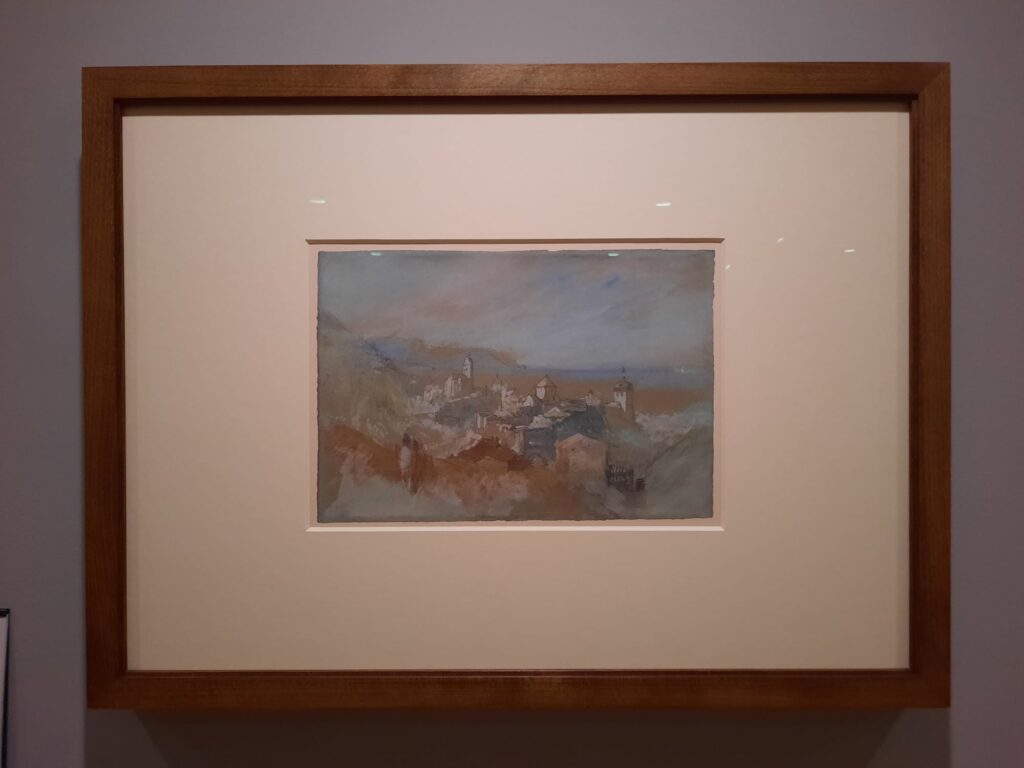Medieval Multiplied: A Gothic Ivory and its Reproductions // Drawn to Blue: Artists’ Use of Blue Paper – The Courtauld Gallery, London
Two free displays at the Courtauld introduce different facets of art history, from techniques in reproduction through the lens of Gothic ivory to works on blue paper over the centuries.

Collection Displays at the Courtauld
While I was at the Courtauld recently being wowed by their exhibition Monet and London: Views of the Thames, I did not neglect the rest of the exhibition programme. The lovely thing at the Courtauld is that they normally have a main exhibition plus one or two smaller, free exhibitions (by free I technically mean part of the main ticket price). These are typically drawn from the Courtauld’s collection and, thanks to the Courtauld’s pairing of art gallery and educational institution, normally nicely focused micro topics within art history.
The current collection displays are excellent examples. We firstly have Medieval Multiplied: A Gothic Ivory and its Reproductions. As the title suggests, this display looks at one particular example of gothic ivory, and different techniques used to reproduce it. Secondly there is Drawn to Blue: Artists’ Use of Blue Paper. This is an even smaller exhibition at just one room, but brings together interesting sketches, copies, and semi-finished works united by their use of blue paper.
I don’t typically (or perhaps ever?) go to the Courtauld just for these smaller displays. They’re more of a bonus after the main event. But I like that, as at the National Gallery, London’s art galleries like to flex their academic muscles in this way. The smaller gallery spaces, without the pressure of ticket sales, are laboratories for little bits of research and interesting ideas. It makes this art history geek very happy. Let’s continue now to look at the current two examples in a bit more depth.






Medieval Multiplied: A Gothic Ivory and its Reproductions
So first up is Medieval Multiplied: A Gothic Ivory and its Reproductions. The Gothic ivory in question is this one from the V&A, originating in Paris circa 1330-1350. It is a mirror back and depicts an allegorical Siege on the Castle of Love. It’s on loan here, along with many different copies. Several are what’s known as ‘fictile ivories’. The word fictile sounds like it means something like ‘fake’, but it actually relates back to things made of pottery, clay or earthenware. In this context, fictile ivories were in practice normally plaster, frequently with other ingredients to recreate the colour and texture of ivory. As well as the historic fictile ivories of the mirror back, there’s a modern 3D print.
Which brings us to what this exhibition is really about, which is the use and development of reproductions. The 19th century saw a lot of new technologies which allowed the reproduction of art amongst other things: photography, for instance, electrotypes, and good old plaster casts. We’ve talked a bit before on the blog about how important reproductions were as a means of experiencing great works of art when travel was more difficult. The reproductions influenced the teaching of art history, but also provoked a certain discomfort with the idea of reproduction vs. original.
As methods of reproduction and teaching have changed, former teaching objects such as the ones on display here have become artefacts in their own right. This simple exhibition shows the ebb and flow of different technologies in artwork reproduction, as well as linking to recent developments like 3D printing, and considering the changing meaning of objects and copies over time. Not bad for a small display. I particularly liked the interactive bits including a stereoscope viewer (slide courtesy of known collector Brian May).
Salterton Arts Review’s rating: 3.5/5
Medieval Multiplied: A Gothic Ivory and its Reproductions on until 16 February 2025






Drawn to Blue: Artists’ Use of Blue Paper
The second exhibition is equally specific in terms of art history. It’s about blue paper. Artists started to use blue paper in 15th century Venice, and its use spread from there. Compared to white paper, blue was an easier backdrop for adding light and dark. Artists often used it for sketches and copies, for working out ideas, rather than for finished works.
Like most paper back then, the base for blue paper was rags (wood pulp paper is a more modern invention). The rags were either blue to begin with (like sailors’ uniforms), or dyed. White paper dipped in a blue solution achieved the same effect. The blue colour was prone to fading, however. What we see today, with blues faded to duller shades, brown or buff, is not what the artists themselves saw. We must therefore use our art-historical imaginations and cast our minds back in time.
The works on view here are mostly from the Courtauld’s own collection again. They are deliberately representative, crossing centuries, European countries, and intentions. There are works by Turner, for instance, Tintoretto, and Wyndham Lewis. Some are studies after another artist’s work. There’s a striking self portrait sketch. And a delicate and rather Rococo pastel of a French lady. It’s perhaps not the most stimulating of exhibitions, but that could be my slight prejudice against works on paper. And I can still appreciate that an exhibition exists and contributes to London’s cultural knowledge-base without getting excited about it myself. Worth popping by if you’re at the Courtauld.
Salterton Arts Review’s rating: 3/5
Drawn to Blue: Artists’ Use of Blue Paper on until 26 January 2025
Trending
If you see this after your page is loaded completely, leafletJS files are missing.

